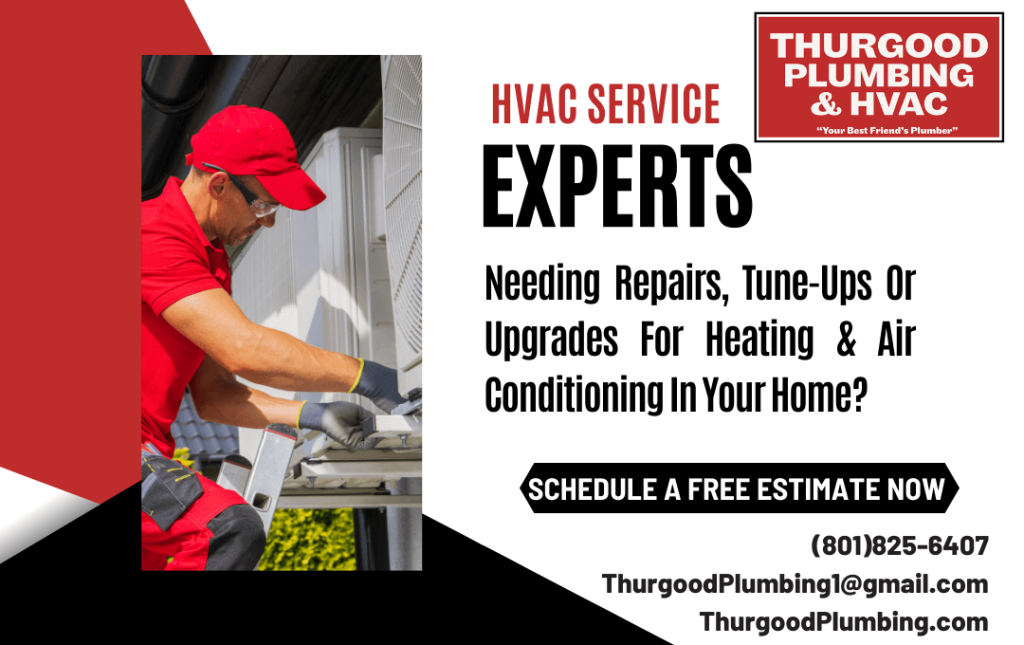Water Softeners
SINCE 1971
$25 OFF
any completed service call over $100
All offers must be requested when calling in for appointment. One coupon per service. May not be combined with other offers.
Hard water is a common problem affecting homes throughout the Clearfield area. If you’ve been looking for a way to combat the effects of hard water on your plumbing and the rest of your home, look no further—Thurgood Plumbing & HVAC has the answers you need. We offer whole-home water softening solutions in Clearfield, Utah, and will work closely with you to deliver the results you deserve.
Contact our team today to make an appointment for water softener installation in Clearfield, Utah, or the surrounding area.
How Can Clearfield, UT, Homeowners Benefit From Water Softener Installation?
Reduced plumbing problems: Hard water can cause scaling in your plumbing lines, which can lead to clogs or low water pressure; it can also affect your water heater. Water softeners will eliminate this problem and allow you to enjoy worry-free plumbing. For homeowners looking for even better water quality, pairing a softener with our water filtration services can help remove additional contaminants and improve overall water safety. They will also save you money on unnecessary plumbing repairs and extend the life of your system, including Tankless Water Heater Installation.
No more dry skin or hair after showering: Abrasive minerals (calcium and magnesium, mainly) in hard water can cause your hair and skin to dry out, turn brittle, or itch. Avoid irritation after bathing or showering with a whole-home water softener.
Eliminate soap scum: This can be a problem when you’re trying to wash your dishes or clean other surfaces. Soap scum is often difficult to remove, but a water softener can help.
Get rid of stains: Hard water can also leave unsightly stains in the toilet bowl or sink. Water softeners will help eliminate these stains and make cleaning much easier. For urgent repairs related to hard water buildup, searching for an emergency plumber near me can connect you to experts who can assess and resolve the issue promptly.
If you are interested in moving forward with water softener installation, reach out to our team today to schedule an in-home consultation and estimate. We’re here to provide the quality water softener installation solutions you need in Clearfield, Utah.
Water Softeners Versus Water Conditioners: Which is Best for Your Clearfield, UT, Home?
Treating hard water isn’t just down to using a water softener. The other option is to use a water conditioner. But while both systems can be used to eliminate the abrasive effects of hard water, the technologies they use are different and produce slightly different results.
Water conditioners feature salt-free technology that is used to treat mineral ions, but it won’t completely remove them. If you are looking for true hard water solutions, a water softener is often the smarter option. Water softeners will completely remove abrasive minerals from your water supply and leave you with cleaner and smoother-feeling water.
Thurgood Plumbing & HVAC is happy to discuss your needs and help you figure out the best solution for your home.
Ready to learn more about the water softener installation process? Speak with our experts today—call now to schedule an in-home estimate for water softening solutions in Clearfield, Utah.
FAQs
Excessive salt usage in water softeners is often due to incorrect settings for the salt dose or overly frequent regeneration cycles. It’s important to follow the manufacturer’s guidelines to adjust these settings appropriately. Additionally, ensure that your water softener’s control unit and timer are functioning correctly, as improper settings can lead to inefficient salt usage and increased operating costs.
Low water pressure following water softener installation can result from several factors. If the water softener is too small for your home, it might not be able to manage the water demands efficiently. Also, sediment buildup or clogged resin beads in the system can reduce water flow. Checking and replacing the sediment filters or cleaning the resin beads might resolve this issue. Ensuring that the softener is appropriately sized for your household’s water usage is crucial.
The water level in your softener’s brine tank is crucial for its operation. If there’s too much water, it might indicate a problem with the float valve or a malfunctioning water entry valve. Adjust the float valve according to your user manual, or replace the water entry valve if it’s defective. Conversely, if the brine tank has too little water, it might be due to a clogged brine line or an incorrectly set float valve. Checking and adjusting these components can help maintain the correct water level in your brine tank.
If your water softener is not using salt, it could be due to a salt bridge, which prevents salt from dissolving into the water to form brine. This issue often arises from high humidity or overly high salt levels in the brine tank. Breaking up any visible salt bridge and ensuring that the salt level is maintained within recommended limits can help resolve this issue. Regularly inspecting and maintaining the salt level in the tank is essential for efficient operation.
Each of these issues highlights the importance of regular maintenance and correct setup for your water softener system. If you’re unsure about how to address these problems, it may be helpful to consult with a professional who can provide guidance and services tailored to the specific needs of your system.
Schedule Your Service
With OUR PROFESSIONALS

